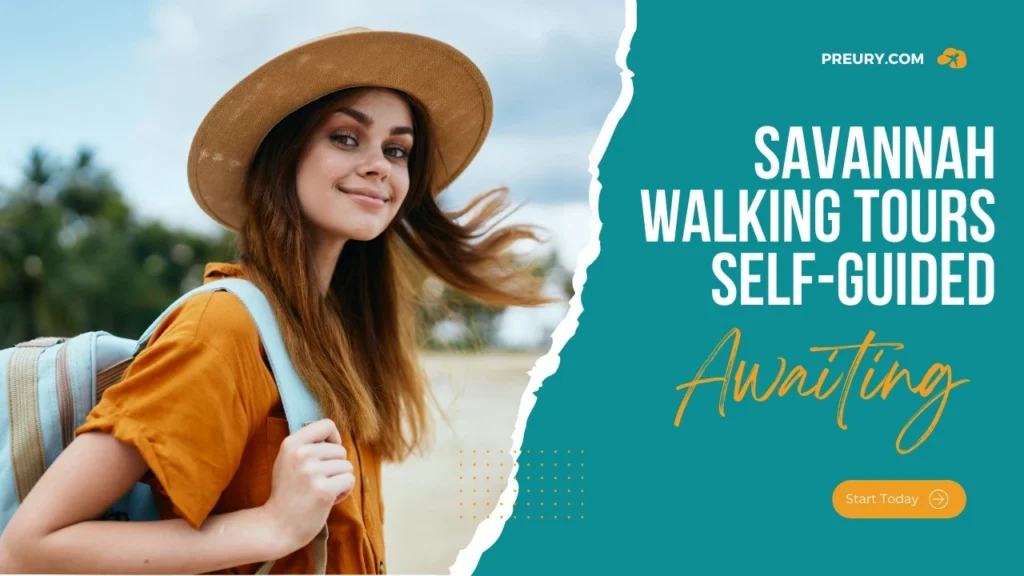
Top 10 Savannah Walking Tours Self-guided Places
Discover the Heart of Oldest City Georgia with Savannah walking tours self-guided. You must have to read this article carefully.
While Savannah probably won’t contain Sweet Georgia, it is evident that no Georgia would be finished without Savannah.
The waterway that gives this coastline city its name is maybe one more adaptation of the name of the Local American clan, the Shawnee, who lived in the district during the 1680s. Then again, it might have come from the Spanish word “sabana,” depicting the immense marshlands encompassing the waterway.
The most seasoned city in Georgia, Savannah, GA, Walking tour map, was first settled in 1733 and served as the capital of the English province of the Territory of Georgia, which, in this manner, became a state in the US.
Savannah developed into an extremely well-off city in the nineteenth century. It was a crucial port throughout the American Unrest and the National Conflict.
At present, a significant Atlantic seaport and modern center point, Savannah invites many sightseers yearly. The downtown area is notable for its noteworthy engineering, horse-drawn carriages, rock squares, and very much-kept parks. It is one of the greatest Public Memorable Milestone Locals in the US.
The enchanting architecturally significant area of Savannah is home to numerous noteworthy structures. That includes the Primary African Baptist Church and offers views like Myakka River State Park.
African American Baptist people groups
It’s one of the most established African American Baptist people groups in the US and the Telfair Foundation of Expressions and Sciences. Quite possibly the earliest open exhibition hall in the American South, and other remarkable nearby milestones like the Gothic-Recovery House of God of St. John the Baptist.
Furthermore, take the accompanying trip to see these sights in the city known for its Southern appeal and accommodation. And partake in the best of Savannah, Georgia!
Self-guided walking tour places:
- Bull Street.
- Owens-Thomas House and Slave Quarters.
- Ships of the Sea Maritime Museum.
- City Market.
- River Street.
- River Street Market Place.
- Savannah walking tours are self-guided in City Hall.
- First African Baptist Church.
- Cathedral of St. John the Baptist.
- Forsyth Park, Savannah walking tours self-guided.
1. Bull Street
The primary road for Savannah walking tours self-guided, Bull Street runs from the Starland neighborhood through the Historic District. Besides, The grandstand of the set of excellence of the city is situated nearby between Forsyth Park and City Lobby. While walking around this area, you will go over five of the most well-known squares in Savannah.
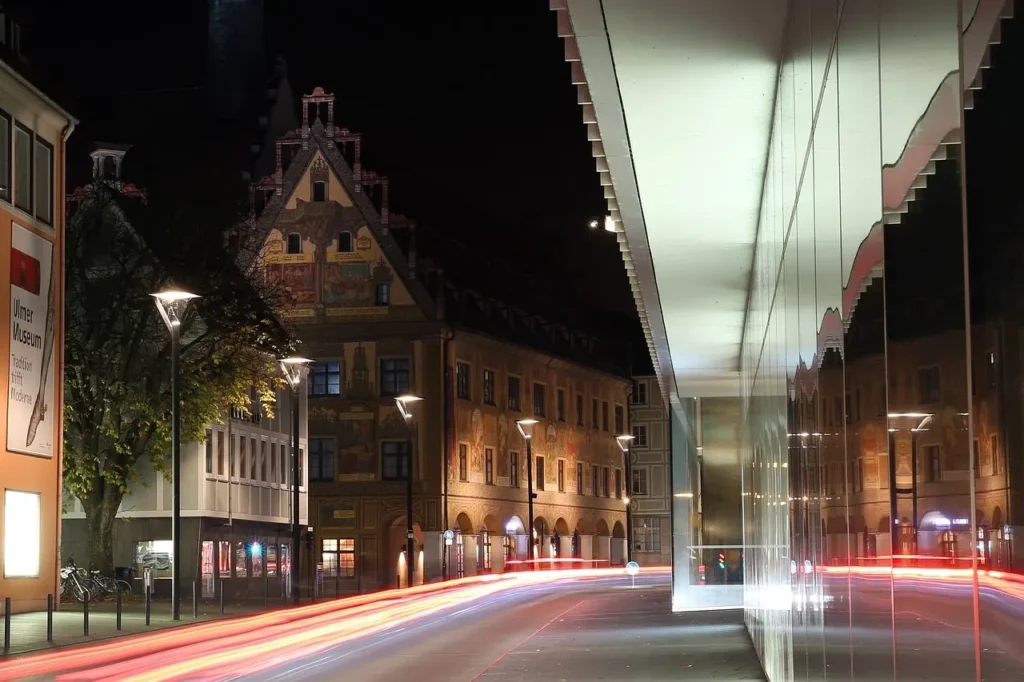
The famous are Johnson Square, Wright Square, Chippewa Square, Madison Square, and Monterey Square. These squares are all exactly two blocks apart.
Specifically, you should check out the hip and artsy BULL STREET TACO (open Monday through Saturday, 11 am–10 pm), which features a lot of modern artwork and old images on the walls.
Additionally, it features a pleasant patio outdoors where a lot of people eat. During the warmer months, it also has a bar and a few tables inside. The bar’s specialty is tequila-based beverages, but the street tacos are the real draw, hands down!
Look for memorial plaques as you travel past the many shops, restaurants, and old residences. Along the road shaded by oak trees and moss, you will promptly have a genuine feeling of being in the Old South.
2. Owens-Thomas House and Slave Quarters
One of America’s best cases of English Georgian design is the important Owens-Thomas House in Savannah, Georgia.
The construction was done in 1819 by an English designer named William Jay. He intended to design a home that would blend in with the English town of Bath.
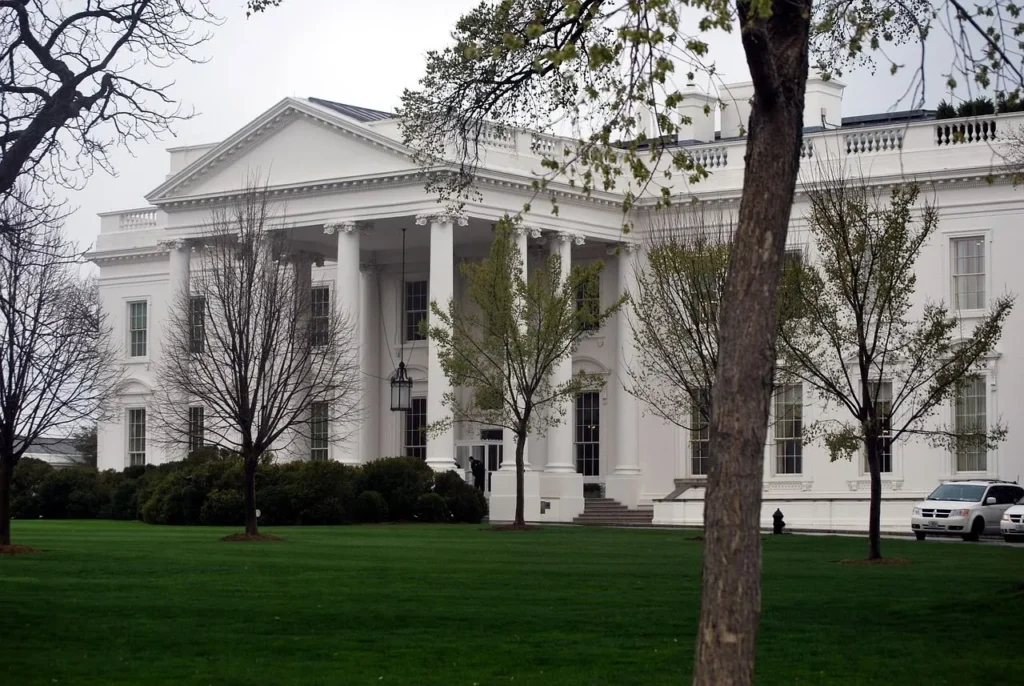
As seen by the use of Bathstone and complex architectural detail intended to become wealthy. The then-emerging Southern port of Savannah.
During the Marquis de Lafayette’s visit to Savannah in 1825, the building’s ornate acanthus scroll supports on its early cast-iron side veranda made him famous.
Richard Richardson, First Owner:
The first owner of the home was Richard Richardson, whose family made a fortune as bankers and cotton merchants. He inspired the residence’s original name.
George Welshman Owens, a politician and attorney from the area, bought the home in 1830. It stayed in his family for several years until Margaret Thomas, Owens’ granddaughter. Gave it to the Telfair Academy of Arts and Sciences in 1951.
The home received the National Historic Landmark designation in 1976. The site is now a museum, complete with the Slave Quarters.
They were discovered and restored during renovations in the 1990s. The Owens family’s belongings span the years 1790 to 1840. It is among the English Regency-era furniture and ornamental arts in its collection.
Other displays include furniture from the English, Georgian, and American Federal periods. Early textiles from the historic Savannah walking tour, silver, Chinese Export porcelain, and artwork from the 18th and 19th centuries.
The carriage house, which was formerly used as slave quarters, is among the oldest and finest. It was maintained in the American South and is the museum’s main attraction, used as a self-guided Savannah walking tour.
The location had items from the era’s slave population, which included nannies, cooks, butlers, and other enslaved laborers.
The Slave Quarters, while lacking architectural importance, hold cultural and historical significance as an example of the African slaves—attempts to keep their ethnic identity.
The building’s ceiling is painted a shade of haint blue, which is Gullah culture. For centuries, this color was used to ward off ghosts and other evil spirits.
3. Ships of the Sea Maritime Museum
The Boats of the Ocean Nautical Gallery was established in 1966 to preserve Savannah’s nautical history. Since 1994, it has lived in the William Scarborough residence. Inside, nine galleries show artwork with a maritime theme, including ship models, paintings, sculptures, and scrimshaw.

The delightful William Scarborough home is by and by being reestablished to its previous look. From the mid-nineteenth 100 years, is, in many regards, greater than the exhibition hall. It was designed by prestigious English designer William Jay. This home traces back to 1819 and is among the city’s most memorable instances of Greek Restoration engineering. William Scarborough, the top of the Savannah walking tours self-guided is one of the principal proprietors of the USS Savannah, submitted the structure’s request.
It soon became the center of vibrant celebrations during President James Monroe’s 1819 visit to the city. It gradually developed into a hub of Savannah’s social life.
The massive Doric portico of the two-story house has a fanlight above it and Roman-style windows surrounding the entrance. Additionally, it has the largest gardens in the Savannah Historic District, spanning two acres and primarily consisting of local species. Every year, the free self-guided walking tour of the Savannah Music Festival is also held on the grounds.
4. City Market
Free Savannah walking tour map The primary marketplace was founded in 1733 as a wooden structure where inhabitants congregated for food and services. It was originally located on Ellis Square.
The market, where farmers and fishermen would bring their wares to sell, evolved into the heart of all downtown activity by 1755 and became the center of local trade.
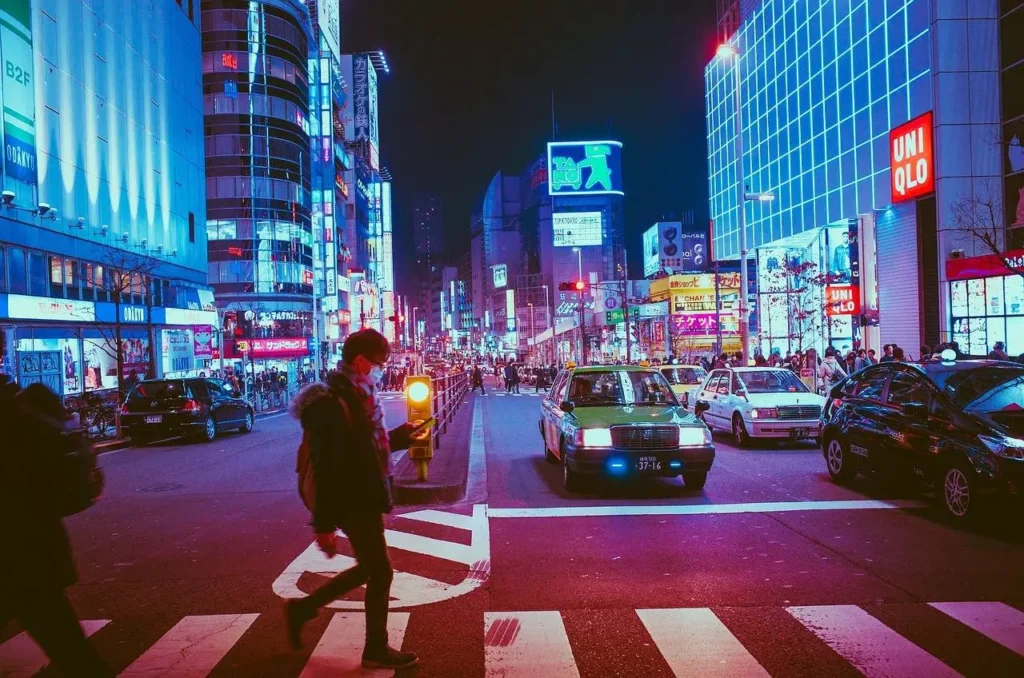
The building project “vastly exceeded expectations” despite its appreciation for being roomy and capable of being kept in the highest condition of cleanliness, with sufficient ventilation. Subsequent excavations showed that the basement floor’s arches were deteriorated and needed to be rebuilt.
A storm in 1896 caused significant damage to the market, which was once closed in 1954. Stretching for a full two blocks between Ellis and Franklin squares, it is flourishing again today.
Art galleries, refined and casual dining businesses, jewelry stores, antique shops, bakeries, foods, and other specialty shops.
The American Prohibition Museum, which features 13 galleries spread across 6,000 square feet of exhibition space, is the newest attraction in the market complex.
The historic site supplies very different emotions by day and by night. In the evenings, guests may take in jazz performances at neighborhood nightclubs. It explores Savannah’s “art and soul” while listening to local musicians perform.
5. River Street
The focal point of Savannah walking tours, self-guided Georgia, is Waterway Road, a famous business promenade that runs along the southern side of the Savannah Stream and is cleared with 200-year-old cobblestones.
The most famous portion of it starts at the Talmadge Memorial Bridge and continues below Yamacraw Bluff and City Hall.
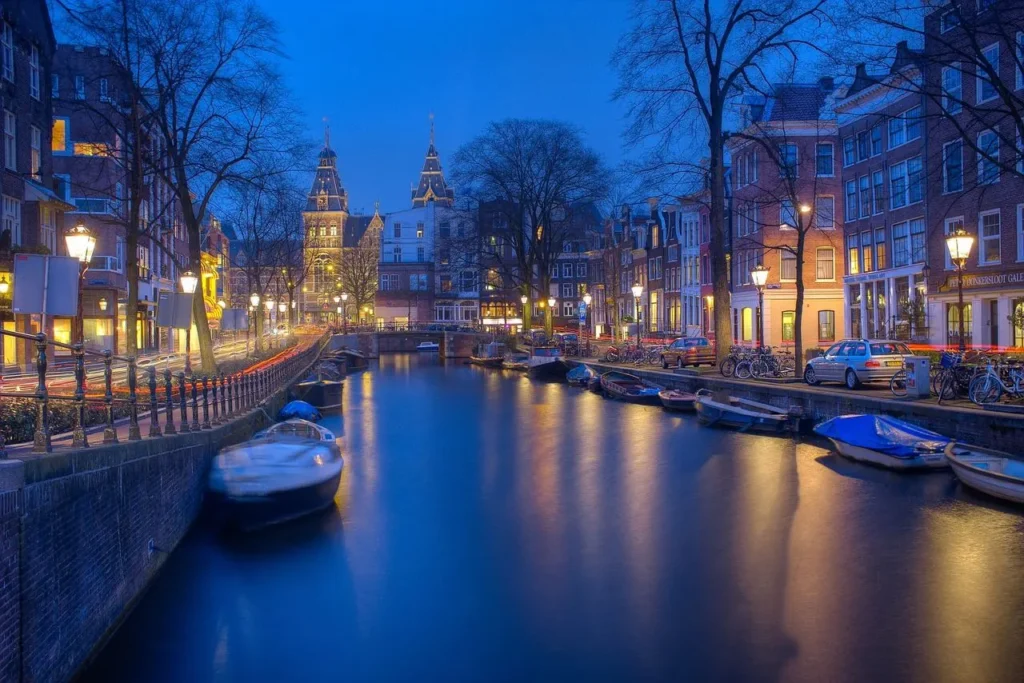
The present Riverfront Square is a popular home base for the two local people and guests, who come to look for keepsakes, take in the enormous boats cruising down the stream, or go to the numerous occasions and festivities held here all year, for example, New Year’s Eve, Holy person Patrick’s Day, and the July fourth firecrackers.
Though most people still prefer the lively bar crawling experience, families are welcome and safe here.
To sum up, If you decide to take an easy path along the beautifully planted river walk, you should check out the statues of the Olympic Cauldron and the Waving Girl.
After that, explore the bluffs along the river on the former Factor’s Walk, a historic network of lanes, cobblestone paths, and bridges. Additionally, you may visit the River Street Hospitality Center, which is next to the Hyatt Regency, or browse the Market Place’s vendors for a while.
6. River Street Market Place
River Street Market Place, which showcases a variety of exquisitely recreated sheds that once stood on this street in the middle of the 19th century, is the essence of Savannah’s love of history.
If you value the self-guided Savannah walking tours, it’s worth exploring the area, especially when you’re waiting for a seat at one of the neighboring restaurants.
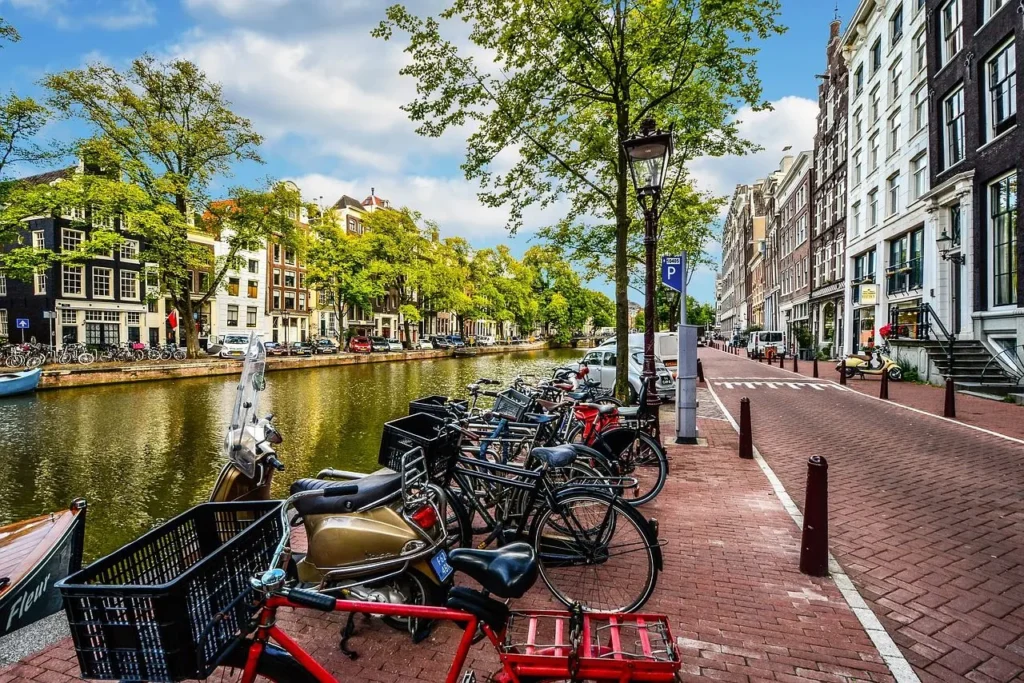
The pleasantly tranquil neighborhood, which includes a cobbled road and river on opposite sides, is home to Savannah’s most distinctive retail attraction, known as this location.
With more than 70 booths in total, it features gifts, artwork, and customized items from all around the world. There is a seller in almost every booth, and since there is a ceiling above, rain is not a problem.
The carved and wood-burning home décor pieces, along with the essential oil-infused candles that double as sunscreen, are among the most fascinating exhibits.
There are many other interesting, one-of-a-kind things, some costly and others homemade (jewelry, carvings, wind chimes, etc.), but it’s still okay to stroll about and take in the local way of life.
Additionally, there is a food cart outside that serves coffee, beverages, and smoothies, as well as picnic tables where you are welcome to relax if you become hungry or thirsty.
Among the highlights for your sweet taste will be the delectable praline from the neighborhood candy store or the honey store.
Walking in the Savannah, GA marketplace doesn’t take long because of its tiny size. It is strongly advised for anybody looking to enjoy outdoor shopping, classic Southern hospitality, and charm.
7. Savannah walking tours are self-guided in City Hall
Standing tall on Bay Street, Savannah City Hall is a striking sight known as Savannah walking tours self-guided, crowned with a charming copper dome coated in gold leaf. Eminent engineer Hyman Witcover, who is notable for various works in the Savannah district, made the construction.
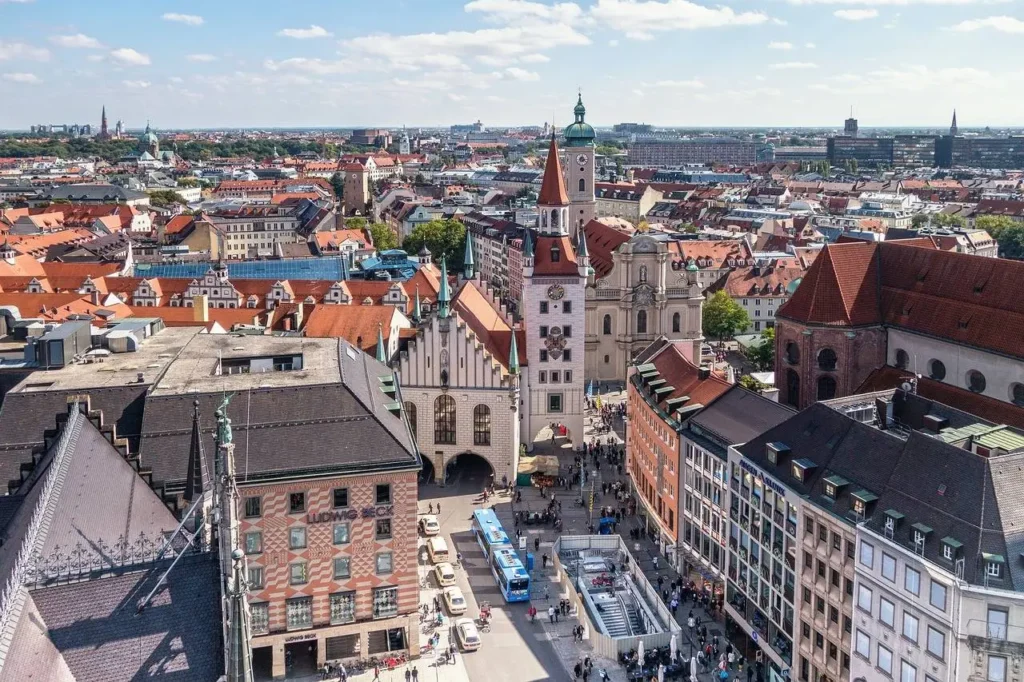
The pleasantly tranquil neighborhood with a cobbled road and river on opposite sides is home to Savannah’s most distinctive retail attraction, known as this location.
He characterized it as “a monument to the progressive spirit that marks the Savannah of today” and that it would “typify the 20th century Savannah, [the one] of indomitable energy and punishing progressiveness.”
The City Hall’s formal opening was in 1906. With gray limestone and granite adorning its outside, it is a great example of Renaissance Revival architecture.
Inside are two elevators and the historically significant steps leading down the former River Street, both of which are worth seeing.
The oldest memorial in the city, for example, is made up of two cannons protected by a little canopy located just next to them. These are the Chatham Artillery Guns that President George Washington gave to the local militia company of the same name in 1791 during his only visit.
These days, locals refer to a particularly strong punch mixture that combines many hard liquors as “Chatham Artillery” in a new way.
8. First African Baptist Church
The oldest frequently operating African American church in North America is the First Colored Church of Savannah, which changed its name to the First African Baptist Church in 1882.
The congregation members who built the current church included numerous slaves who would produce bricks, pour mortar, and cut pews for the building (which are still in use today!) after working all day in the fields.
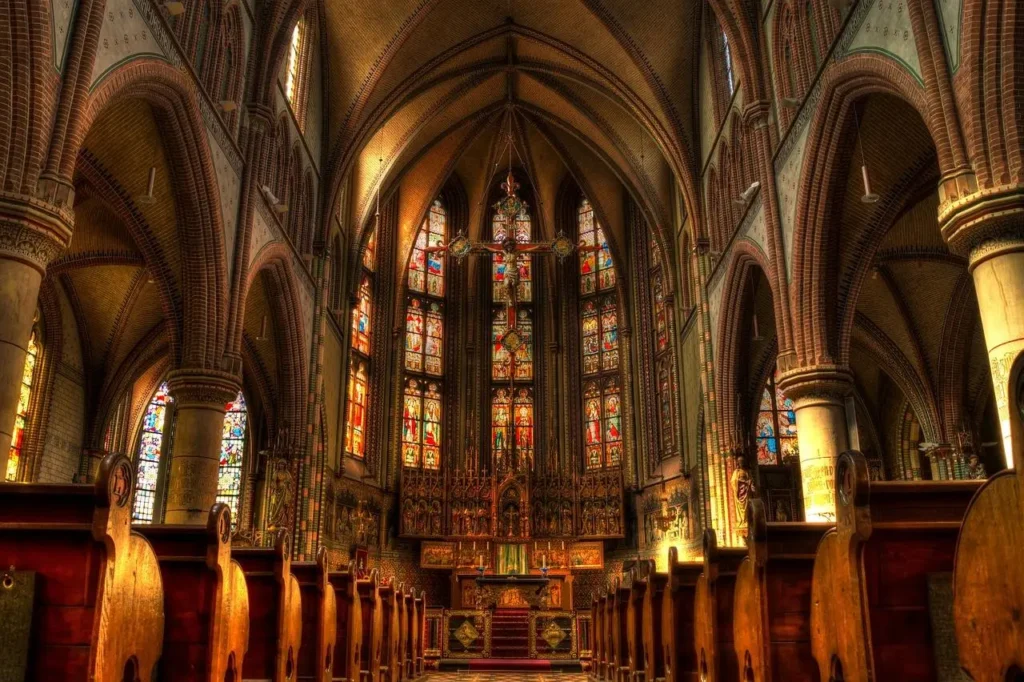
This chapel served as a haven for fugitive slaves throughout the stormy years of the American Civil War. Due to a lack of better information, some tourists now mistakenly believe that the “air holes” still visible in the basement floor are an artistic architectural element.
The fugitives hid in this four-foot-high area between the basement and the foundation below.
Those interested in Savannah walking tours, self-guided history in particular, and history in general, might want to consider a guided tour of the church.
Throughout the tour, which includes stops at the main temple, the upstairs, and the basement, you may learn about the importance of the Underground Railroad.
9. Cathedral of St. John the Baptist
Roman Catholics were banned from moving to the South during the early years of American history due to concerns about their probable allegiance to the Spanish monarchy and the possibility of the Southern colonies’ autonomy from the English-controlled North.
Therefore, Savannah did not have a Catholic church until the French immigrants from Haiti, who were escaping the French Revolution, founded it for the first time in 1799.
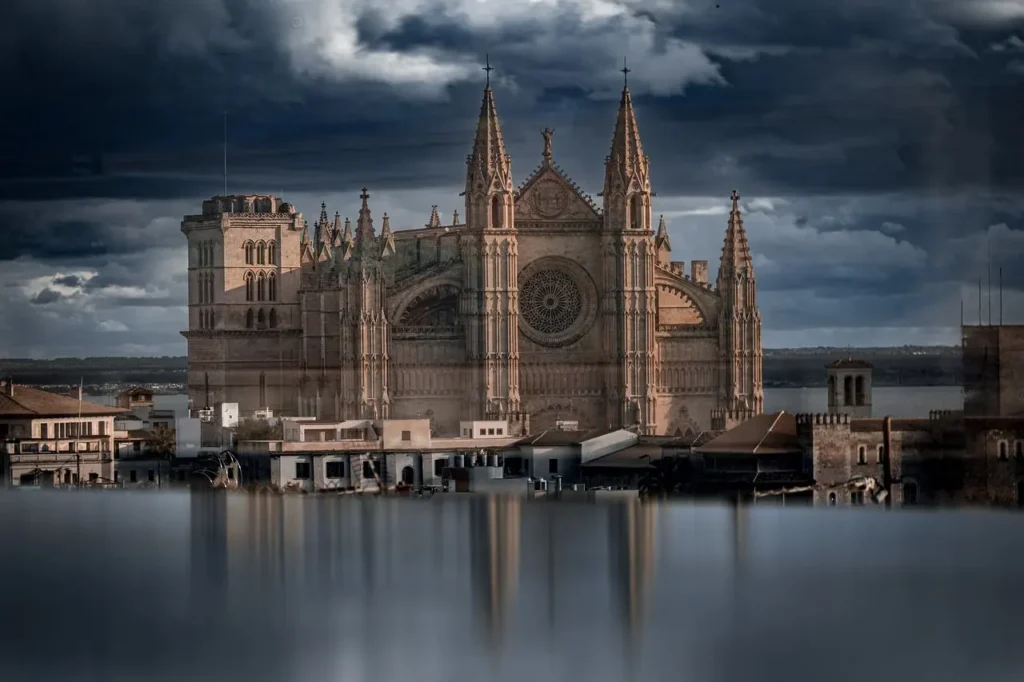
The cathedral has several outstanding artistic and architectural elements, including the Great Rose Window, a Gothic quatrefoil with Saint Cecilia in the middle.
The Original Window of the Blessed Virgin Mary is one of the few windows that survived the massive fire that destroyed the city in 1898.
Furthermore, the cathedral has many 1912 murals that show saints and other holy characters together with the encoded symbols that represent their lives and deaths.
Beautiful to see, this exquisite example of French Gothic architecture is akin to a welcome “vacation” to Europe, especially striking to people who have not ventured far from the United States.
You’ll be happy you took the guided tour of the building while you were inside. Set aside some time for it. In addition, don’t forget to turn the handle and put some cash in the unique contributions box at the exit.
10. Forsyth Park, Savannah walking tours self-guided
Forsyth Park in Savannah, Georgia, looks like Lincoln Park in Chicago and Focal Park in New York City.
The Forsyth Wellspring is unquestionably the recreation area’s most notable component and point of convergence.
Later, this wellspring has shown up in a few movies, including “noon in the Nursery of Good and Wickedness,” “Cape Dread,” and “Forrest Gump.”

Notwithstanding the many strolling ways, there are tennis and ball courts, regions for soccer and frisbee, a half-shell theater, a youngsters’ play region, a fragrant “Nursery for the Visually impaired” (where the plantings are all picked for their aroma, instead of their appearance), and more offices.
Shamrocks Rugby Club
The Savannah Shamrocks Rugby Club is based in the park, with several monuments honoring notable figures. One of the monuments honors those who suffered in the Civil War, the worst military battle in American history.
The park often offers free movie screenings every few months in addition to farmers market activities on Saturdays and musical performances like the Savannah Symphony and Jazz Festival.
This is a highly family-friendly location, perfect for people who enjoy playing kickball, throwing balls, or just lounging on a blanket and lunch beneath the oak tree’s shade.
Benefits of self-guided walking tour
- Reduce stress and anxiety.
- Improve your physical health.
- Improve mindfulness and focus.
- Increase creativity and inspiration.
Certainly, Self-guided walking tour maps are typically available through tourist centers, online travel agencies, or Savannah-specific apps. These maps frequently list the main attractions and offer details on each stop.
Strolling visits in Savannah are generally secure. However, it’s vital to be aware of your environmental elements, especially if you’re traveling solo. Stay in sufficiently bright areas, avoid void regions, and follow your stomach.
Walking excursions with guides available at your own pace often cost nothing. However, there can be an admission charge if you choose to visit some of the route’s attractions.
Of course! You are welcome to customize your journey to fit your interests, omit certain destinations, or extend your time at locations that pique your interest.
Conclusion
Savannah’s independent strolling tours give a unique, tweaked insight into the city’s energetic history, alluring engineering, and exquisite roads. Guests might drench themselves in Savannah’s rich heritage, from before-the-war chateaus to cobblestone squares, by visiting at their own speed without feeling hurried or restricted by a predefined plan.
The Savannah walking tours’ self-guided flexibility empowers unconstrained revelations and the potential chance to wait at the most loved regions or investigate further into specific destinations of premium. Moreover, independent outings give a feeling of freedom and experience, permitting visitors to cross the city’s confounded roads and secret gems.
Be that as it may, leaving on an independent outing requires fast preparation and study to guarantee a consistent and pleasurable experience.
Travelers should learn guides, manuals, and computerized devices to effectively and instructively determine which areas to see.
Moreover, while independent visits are a more affordable choice than directed visits, they might lack the experience and knowledge that gifted aides bring.
In any case, for those searching for a more free and adaptable investigation of Savannah, independent strolling visits are an excellent and critical chance to immerse themselves in the city’s particular feel and captivating history.

My name is Zahra Tariq, and I have been traveling in Florida for the past 8 years. I have explored Florida’s beauty during this time and have seen many beautiful places in the state.

4 thoughts on “Savannah walking tours self-guided”